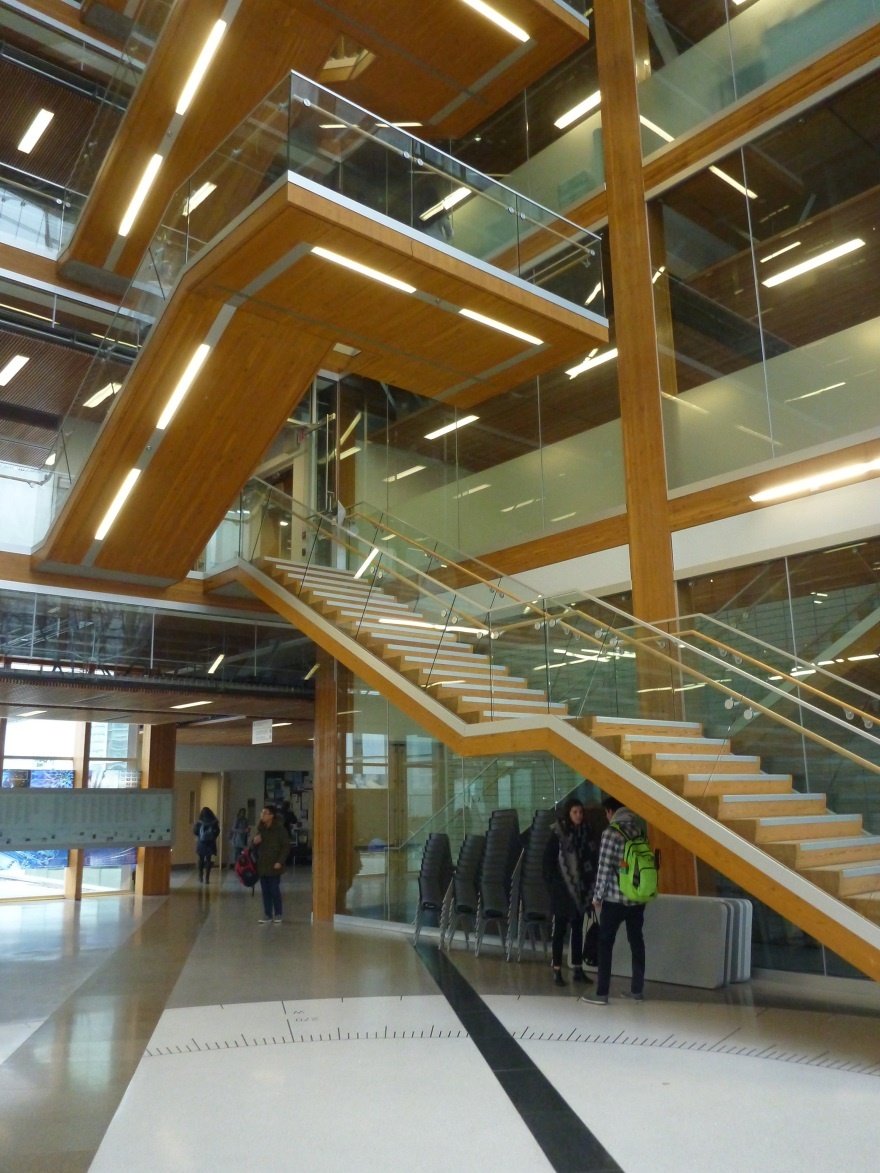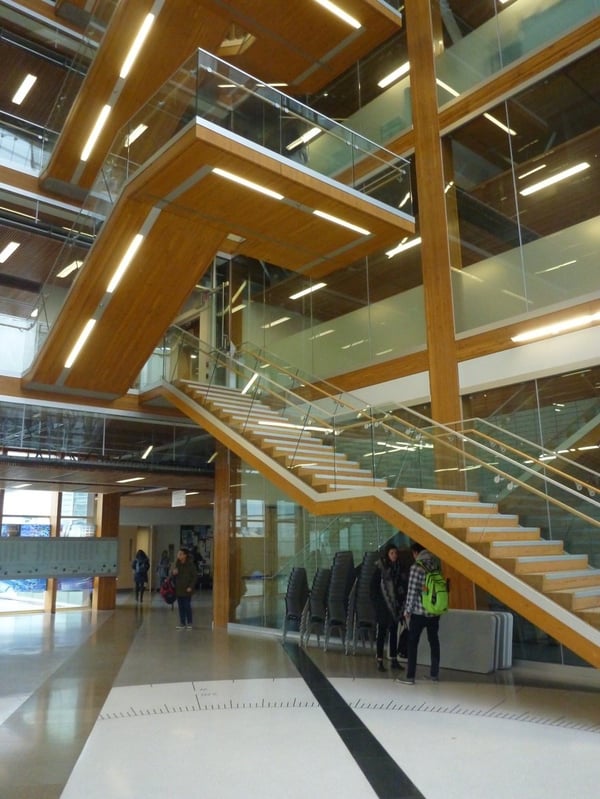4 min read
Bipartisan ‘Timber Innovation Act’ Reintroduced in Senate and House
John Greene
:
March 9, 2017

On the heels of our recent coverage of the hurdles wood building materials are facing in parts of Florida, the Senate and House recently reintroduced the “Timber Innovation Act” (initially introduced in 2016) in an effort to spur economic development through the construction of tall buildings constructed of mass timber and other wood-engineered products.
The bill would incentivize investment through the National Forest Products Lab and American colleges and universities to conduct research and development on new methods for the construction of wood buildings. Additionally, the bill would support ongoing efforts at the United States Department of Agriculture to further support the use of wood products as a building material for tall buildings.
Sens. Debbie Stabenow (D-MI), Mike Crapo (R-ID), Amy Klobuchar (D-MN), Jim Risch (R-ID), Ron Wyden (D-OR), Susan Collins (R-ME), Maria Cantwell (D-WA), Roger Wicker (R-MS), Jeff Merekly (D-OR), Steve Daines (R-MT) Angus King (I-ME), Gary Peters (D-MI) and Jon Tester (D-MT) introduced the Senate bill.
The House bill was introduced by Reps. Suzan DelBene (D-WA), Glenn “GT” Thompson (R-PA), Derek Kilmer (D-WA), Cathy McMorris-Rodgers (R-WA), Ann McLane Kuster (D-NH), Bruce Westerman (R-AR), Peter DeFazio (D-OR), Ralph Abraham (R-LA), Kurt Schrader (D-OR), Steven Palazzo (R-MS), Rick Larsen (D-WA), Gregg Harper (R-MS), Suzanne Bonamici (D-OR) and Peter Welch (D-VT).
The bipartisan bill is also supported by Weyerhaeuser, National Wildlife Federation, and the American Wood Council, in addition to more than 100 other stakeholders.
The bill would:
- Establish a performance-driven research and development program for advancing tall wood building construction in the United States.
- Authorize the Tall Wood Building Prize Competition through the US Department of Agriculture (USDA) annually for the next five years.
- Create federal grants to support state, local, university and private sector education, outreach, research and development (including education and assistance for architects and builders) that will accelerate the use of wood in tall buildings.
- Authorize technical assistance from USDA, in cooperation with state foresters and state extension directors (or equivalent state officials), to implement a program of education and technical assistance for mass timber applications.
- Incentivize the retrofitting of existing facilities located in areas with high unemployment rates, to spur job creation in rural areas.
This bill would also be an important step in helping wood-based construction products gain more traction on the larger market. Wood-based building materials have come a long way in recent decades, especially with the introduction of cross-laminated timber (CLT) in the 1990s. Today, CLT is an established building product and roughly 625,000 m3 of CLT was produced in 2014—approximately 90 percent of which originated in Europe for both domestic and export markets.
As Hannah Jefferies noted last September, Cross Laminated Timber and other wood-engineered products are gaining popularity among builders for a number of reasons. “The 2015 International Building Code and 2015 International Residential Code now recognize CLT manufactured in accordance with the Standard for Performance Rated Cross-Laminated Timber (ANSI/APA PRG 320), which was approved by the American National Standards Institute on October 30, 2012. The 2015 IBC allows CLT to be used in residential structures up to five stories and certain ‘heavy-timber’ commercial structures up to six stories.”
 Interior stairwell in the Earth Sciences Building at the University of British Columbia in Vancouver, Canada (Image Courtesy Patricia Layton/Clemson Wood Utilization + Design Institute)
Interior stairwell in the Earth Sciences Building at the University of British Columbia in Vancouver, Canada (Image Courtesy Patricia Layton/Clemson Wood Utilization + Design Institute)
Rep. Suzan DelBene said that “Advancing tall wood building construction through the Timber Innovation Act is a win for working families and our environment. Technological advancements in cross-laminated timber have made it easier for us to support healthy forests, wildlife habitats and rural economies dependent on forest products. Encouraging the use of green building materials instead of building materials dependent on fossil fuels reduces greenhouse gases creating a cleaner, healthier environment for future generations.”
Industry Reactions
American Wood Council (AWC) President and CEO Robert Glowinski said that “The United States has an opportunity to bring new, sustainable mass timber technology to our construction industry, and the Timber Innovation Act directs technical assistance and research components already in place. Building construction using wood and mass timber products directly supports jobs in areas of rural America that have yet to recover from the recession and would lessen our dependence on fossil-fuel intensive alternatives, so having the federal government encourage further development of this emerging construction technology stands to benefit and enhance both infrastructure development and putting people to work.”
Tom Martin, American Forest Foundation (AFF) president and CEO noted, “Hardworking families and individuals own and care for more than one-third of US forests. These families rely on markets for their timber to stay on the land and to afford to practice the stewardship needed to deliver the clean air and water, wildlife habitat, and products Americans use every day. Thanks to leaders in the House and Senate, this legislation directs research and development that will open forest market opportunities, create jobs and rural economic growth, and support millions of families across rural America.”
“Mass timber technology is revolutionizing and disrupting the way buildings are being built around the world,” said Cees de Jager, Binational Softwood Lumber Council (BSLC) general manager. “Unfortunately, the United States has been trailing other markets in this regard. The Timber Innovation Act will significantly contribute to enhancing our industry’s ability to close the knowledge gap and stimulate private sector investment that supports manufacturing and job growth in rural communities, optimizes the construction process and regains our leadership position.”
Adrian Blocker, senior vice president of wood products at Weyerhaeuser added that “There is enormous potential for mass timber and the Timber Innovation Act takes an important step forward to advance this new technology. While wood is one of the oldest building materials around, new technology utilizing engineered mass timber panels and wood-based building systems creates new possibilities for wood construction.”
Adoption of the Timber Innovation Act has the potential to stimulate wood-products manufacturing and provide new outlets for underutilized forest raw materials, providing a benefit to both the wood products industry and rural communities throughout the country. Wood products like lumber, CLT and other mass timber systems also continue to store carbon long after the harvest and mill production cycle is complete. As modern economies continue to grapple with climate change challenges and strategies for offsetting carbon emissions, forests and forest products will remain an ever more important part of the solution.
If you would like to urge your representatives and senators to pass this bill, you can find their contact information here: https://www.usa.gov/elected-officials.





